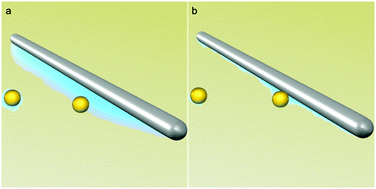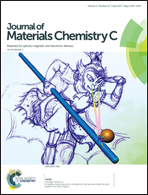A capillary force-induced Au nanoparticle–Ag nanowire single hot spot platform for SERS analysis†
Abstract
Designing plasmonic hot spots within an active platform that has well-defined and highly reproducible features is one of the most critical issues in obtaining ultrasensitive detection and credible signals for surface-enhanced Raman spectroscopy (SERS). Hot spots between two or more nanostructures can amplify Raman signals for single-molecule-level detection. Here, we report a SERS-active platform by using spontaneous capillary imbibition to assemble a single Au nanoparticle (NP) onto the surface of a single Ag nanowire (NW). Optical excitation of this coupled nanostructure provides a SERS hot spot at the gap between the single NP and NW. This platform can be easily fabricated, and the position of the single hot spot can be conveniently located during SERS measurements. Moreover, the single Au NP coupled to the Ag NW acts as an optical antenna for localizing and enhancing the electromagnetic field (E-field). Most importantly, the single hot spot platform can provide a “nano-channel” for trapping molecules because of the presence of capillary imbibition. We show that high quality SERS spectra of various molecules with different natures can be generated on a single hot spot structure with reliable reproducibility and excellent sensitivity. Our approach not only overcomes the difficulty of bringing two nanostructures together to form an efficient junction with simple fabrication and maximum uniformity, but also provides a SERS-active platform with a narrow enhancement factor (EF) distribution.

- This article is part of the themed collection: 2017 Journal of Materials Chemistry C HOT Papers


 Please wait while we load your content...
Please wait while we load your content...